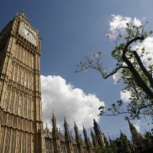
Westminster
The most famous district of London has arguably four of Britain’s most important buildings—the Houses of Parliament, Buckingham Palace, Westminster Cathedral and Westminster Abbey. It also has the country’s two most important streets, Whitehall, the home of British government with its various ministries and departments, and Downing Street, the prime minister’s residence. A borough of just 22km², Westminster has a population of 222,000—a figure that rises to more than a million each day when tourists and workers are added. Along with the workings of government, Westminster is also home to major offices of a large number of international corporations and organisations.
However, Westminster also includes London’s best-known shopping area, the West End, which includes Oxford Street, Piccadilly, Leicester Square, Soho, Trafalgar Square and the exclusive Mayfair area. Other famous London landmarks such as the Big Ben clock tower and Marble Arch also fall within the borough. As Europe’s No. 1 tourist destination, London attracts some 17 million visitors a year—of whom an estimated 95% visit Westminster. The British Museum alone attracted 6.7 million visitors in 2013. Other tourist attractions are West End’s numerous theatres, cinemas, museums, art galleries, pubs, restaurants and nightclubs. To cater for the sheer demand from visitors, the borough has 40% of the capital’s hotel beds. Despite Westminster’s economic importance, it also contains pockets of unemployment and relative deprivation.
SOME RELATED NETWORKS
URBACT Markets
Freight TAILS
Inspiring the next generation of entrepreneurs - A review of the first Westminster Enterprise Week
URBACT Markets finalizes in Barcelona with new know-how, a shared network and a belief in markets
News





